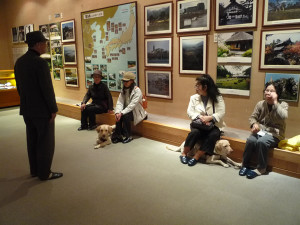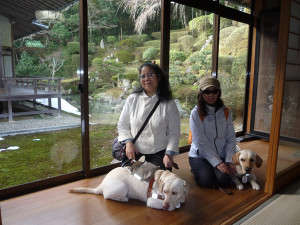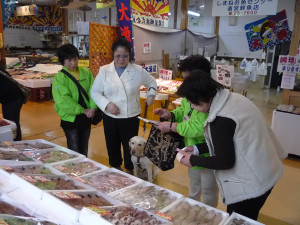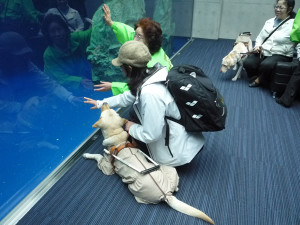Day 1
Sesshūno Sato Memorial Museum and Taikian
Masuda is the demise place of Sesshū, who was active as a painter in the 1400s. Sesshūno Sato Memorial Museum introduces Sesshū and Masuda. It’s a journey course to Masuda, a town that Sesshū loved and where the history of the Middle ages remains, popular among the locals, and a course to know Sesshū himself.
It’s possible to have a cup of tea at Taikian, located beside the museum.
Ikōji Temple (Sesshū’s Garden)
The Sōmon gate at the entrance of the Ikōji Temple, which was transferred from the Ōtemon gate of the Nanao Castle and is one of the ryūgūzukuri style and now a prefectural important cultural property, is waiting for the visitors. In addition, behind the temple there’s a garden built by Sesshū at the time he visited Masuda. It has been selected as national historic ruins, as a famous garden in the Muromachi era. You can feel the dignified atmosphere of the garden.
Migita Honten sake brewery
The Migita Honten sake brewery, which has been operating since 1602, is the oldest sake brewery in the Sanin area. Its representative brand, called Sōmi, is popular among the locals. Observing the production, using all senses like touching the equipment, tasting the flavor of the product, hearing the machines are all possible.
| Day 1 |
|---|
| JR Masuda Station |
| Bus stop: Departure from Masuda Station (Iwami Kōtsū Hamada-Masuda Line) |
| Bus stop: Arrival at Sesshūno Sato Kinenkan Mae |
| Moving on foot: Around 5 – 10 minutes |
| Strolling at Sesshūno Sato Memorial Museum and Taikian (strolling in the museum, tasting Japanese sweets, tea, etc.) |
| Moving on foot |
| Bus stop: Departure from Sesshūno Sato Kinenkan Mae (Iwami Kōtsū, Kushiro Line) |
| Bus stop: Arrival at Ikōji Temple |
| Strolling at Ikōji Temple (Sesshū’s Garden, bell tower, and others) |
| Moving on foot |
| Migita Honten: Observing the sake brewery |
| Moving on foot |
| Staying / Shimadaya and others |
Day 2
Shimane Fish Center
Hamada port, where fresh fish caught in the Japan’s Sea is collected. The freshly caught fish is sold for a bargain price at the Fish Center. In addition, at the restaurant on the 2nd floor, you can fully enjoy seafood dishes.
Shimane Aquarium, Aquas
The largest aquarium in the Chūgoku and Shikoku areas, it features about 500 species. It’s also famous throughout Japan for the belugas’ performance.
Audio guide and wheelchair lending is available at the reception. For visually impaired people, there are various kinds of fish reliefs on the walls of the 3rd floor. It’s possible to feel the sizes and shapes of various fishes by touching. There are many accessible bathrooms inside the facility.
| Day 2 | |
|---|---|
| Shimadaya | |
| Bus stop: Departure from Shimoichi (to Masuda Station) | |
| Bus stop: Arrival at Masuda Station | |
| JR Masuda Station | |
| JR: Departure from Masuda Station | |
| JR: Arrival at Hamada Station | |
| Bus stop: Departure from Hamada Eki Mae (Iwami Kōtsū, Sufu-Gōtsu Line to Sufu) | |
| Bus stop: Arrival at Shingyokō Mae | |
| Moving on foot | |
| Strolling at Shimane Fish Center (shopping, eating seafood from Japan Sea, etc.) | |
| Bus stop: Departure from Shingyokō Mae (Iwami Kōtsū, Sufu-Gōtsu Line to Gōtsu) | |
| Bus stop: Arrival at Aquas Mae | |
| Observing the aquarium Aquas | |
| Moving on foot | |
| JR Hashi Station |








